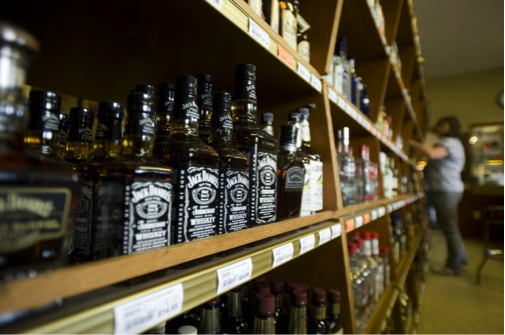It is known that during economic hard times, sales for most products drop as people attempt to tighten the old belt buckle. However, for Americans, this rule of thumb does not pertain to liquor. Historically, during times of a recession, fast food, lottery tickets, and liquor sales increase as the economy wanes. The reason for this should be obvious, people want cheap and filling food, they want to keep hopes alive and dream big, and when those hopes diminish, they need to drink their sorrows away.

Liquor Volume
So as you can imagine, liquor industry sales and growth have been healthy. In 2011, production volume increased at the same rate as it has every year since 2000, which is around 2.9%. This steady, non-fluctuating rate is due to the fact that as the population increases, more people are of drinking age every year. So sales are going to increase according to that.
Liquor Revenue
Total liquor supplier gross revenue for 2011 was $20.3 Billion, which is a 6.3% increase from 2010. On average, the year-to-year growth since 2000 has been 6.5%. This even remained true during the housing market crash of 2007, however, in 2008 and 2009 with the stock market crash, revenue growth was stagnant. Eventually returning to its normal growth rate in 2010.
Type of Liquor Sales
In 2011, there is a clear winner for the type of liquor receiving the most sales. As is expected, beer is the obvious front-runner receiving 48.9% of total sales. Coming in second is spirits with 34.1%, and Wine with the low of 17% total market share. So what should be taken away from this, nothing more than what we already knew… Americans love their beer.
Premium vs. Generic Liquor Sales
Value, or low quality liquors, received 19.8% of total market share, which equaled $4 billion in sales. Premium, or low-to-mid quality liquors, received 35% of total market share, which equaled $7.1 billion in sales. High end, or mid-to-high quality liquors, received 27.8% of total market share, which equaled $5.6 billion in sales. Finally, super, or high-end quality liquors, received 17.4% of total market share, which equaled $3.5 billion in sales.
So what is clear by this data is that Americans tend to buy medium quality liquor, staying away from the super low end as well as the super premium type. These stats are most likely due to the fact that we predominately drink beer, which is within the medium quality range of liquors, not being too expensive or too cheap.
Consumer Drivers
Consumer Confidence: One of the main factors that have been found to drive people to purchase liquor recently has been consumer confidence. Unemployment is high, with June showing the unemployment rate at 9.82% , while the underemployed, those working 30 hours or less a week, was at 15%. Though job growth is occurring slowly, growth is growth, and people are willing to spend if they have the cash to play with.
Stable Prices: Liquor prices have not fluctuated much over the years, which helps drive sales as people do not have to worry about buying enough now in fear of the prices being too expensive later. This may seem odd, as if they did increase, you wouldn’t assume sales to change dramatically. However, look at vehicle sales vs. mpg statistics. What you will find is surprising, when gas prices drop; sales on less efficient vehicles rise. You might wonder why, as gas prices are only going to continue to rise, but reasoning behind consumer spending is quite convoluted at times. But the thing to note is that small changes often can have larger effects.
Consumer Spending: Full service restaurants and bars have found that their revenue has returned back to pre-recession numbers. If more people are going out to eat, and specifically drink, then liquor sales are obviously going to increase as well.
Product Innovation: Companies will always and continue to be innovative in both the product itself, as well as their marketing means. Usually it is the marketing itself that generally makes a product popular, it is then dependent on the quality of the product whether it will remain popular or not.
Conclusion
In the end, liquor isn’t going anywhere unless we suffer another prohibition. Sales are going to be up in times of hardship as people will want to drink their problems away, as well as prosperous times, simply drinking for celebration. Revenue is up year after year, production volume is up year after year, it’s as though you are selling a “needed” item as opposed to a “wanted” one. Which is really the best business to be in.
This author of this article was Damien S. Wilhelmi, an Internet Marketing prodigy and SEO wunderkind. You can follow me on twitter @JakabokBotch to realize you really don’t know Jack! I am writing on behalf of liquormart.com who offer cheap beer as well as sell and deliver liquor online.
Interesting Facts About U.S Liquor Consumption

